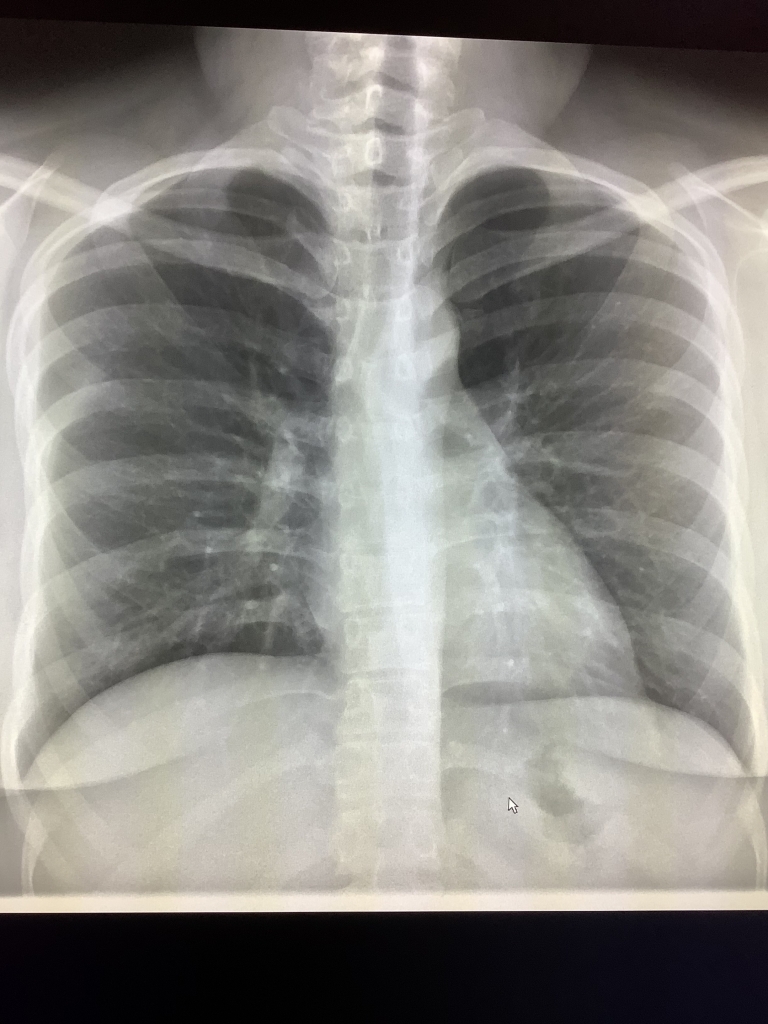Mass on chest X-ray
A mass is a spot on a chest X-ray that is greater then 3 cm in size. Although the most concerning cause of a mass on a chest X-ray is cancer, there are many other causes of a mass including some diagnosis that aren’t masses or even true abnormalities.
A mass will look like a white ball on a chest X-ray. While this may represent lung cancer, other cancers such as lymphomas and sarcomas can present this way. Spread of cancer to the lung can also look like a mass, although more commonly has the appearance of multiple nodules or spots less then 3 cm scattered throughout the lungs.
Fungal and parasitic infections can cause the appearance of a mass in the lung. An abscess will look like a mass, sometimes with an air-fluid level. This is an infection that has been walled off by the body. Some pneumonias, particularly in kids can look round and mass like. Sometimes when lung collapses, it can look round and be called round atelectasis.
Other causes of a mass can be aneurysms which will be next to blood vessels like the aorta. An AV malformation or abnormal communication between artery and vein will look like a mass. A benign tumor such as a hamartoma will also look like a mass.
Benign findings like eventration of the diaphragm can look like a mass. This is a protrusion of the diaphragm at a site of weakness. A hiatal hernia where a piece of the stomach protrudes into the chest will look like a mass. A pleural plaque from asbestos exposure can sometimes mimic a mass. A prior infection will have calcifications but can look like a mass.
A chest CT will often be ordered to further evaluate the mass found on chest X-ray. Fortunately, CT is pretty good at sorting out the various causes of masses. A pneumonia will often look less like a mass on CT and your symptoms will often indicate that you have an infection. Benign tumors such as hamartoma will often have fat density. A prior infection will have calcifications. Eventration of the diaphragm will be clearly seen as will hernias. Aneurysm and AV malformations will be associated with blood vessels.
When it is not clear what the mass is, then a biopsy may be done. Either through the bronchi called a bronchoscopy or through the chest with a needle. Surgery may be needed in cases where the biopsy is not clear. In some cases, a PET scan may be ordered. When the mass is metabolically active or more concerning, then it will light up. It will often not if it’s scar tissue, although some tumors don’t light up on PET scan. Also, some infections can also light up on PET scan. So in many cases, even having a PET scan will lead to biopsy.
If you have old studies, then bringing those in for the radiologist to compare is essential. If the mass you have has been there for many years and hasn’t changed, then it’s likely benign. It’s obviously more concerning if new. The history your doctor takes is also important. A mass becomes much more concerning if you’ve been a life long smoker or if you had cancer in the past.

